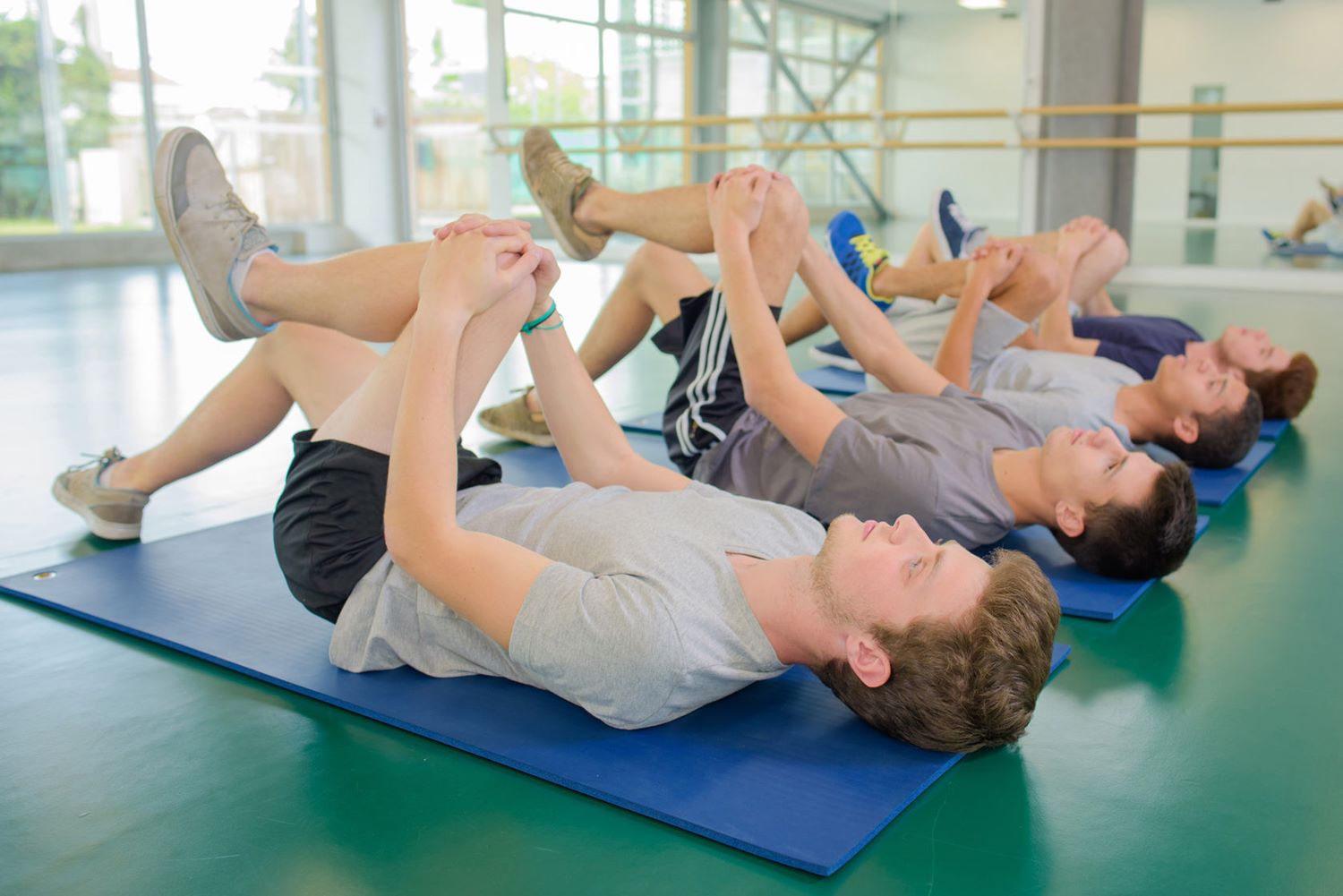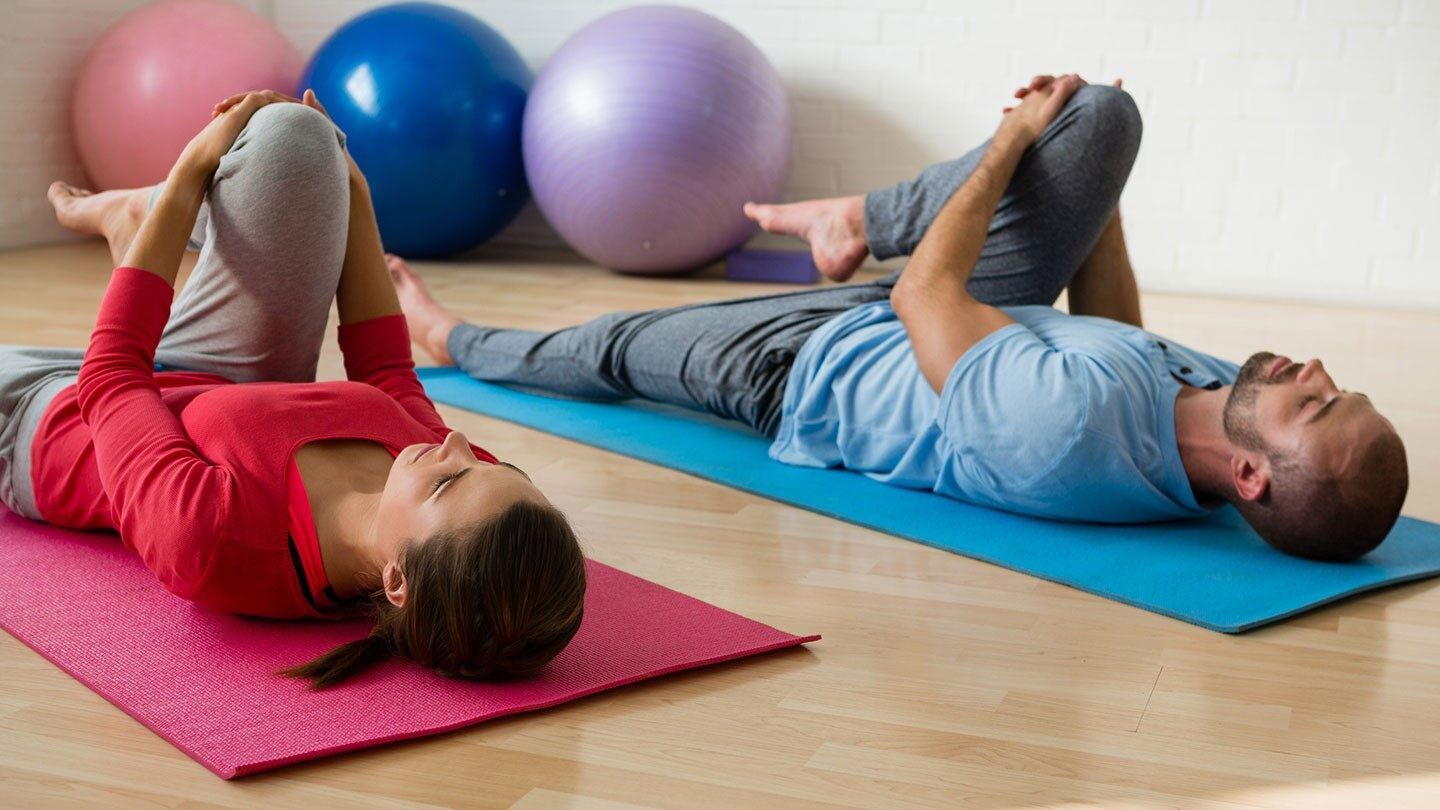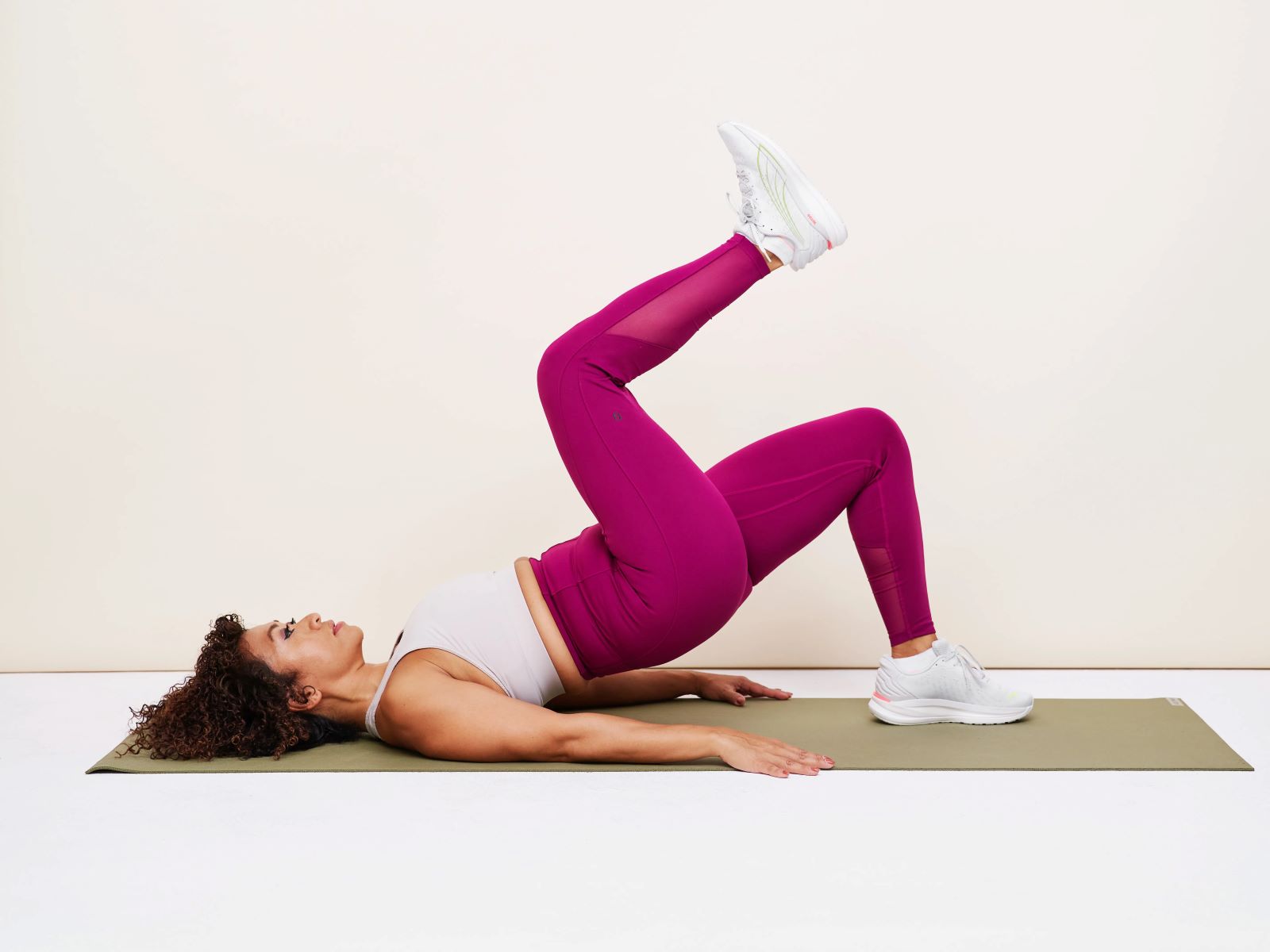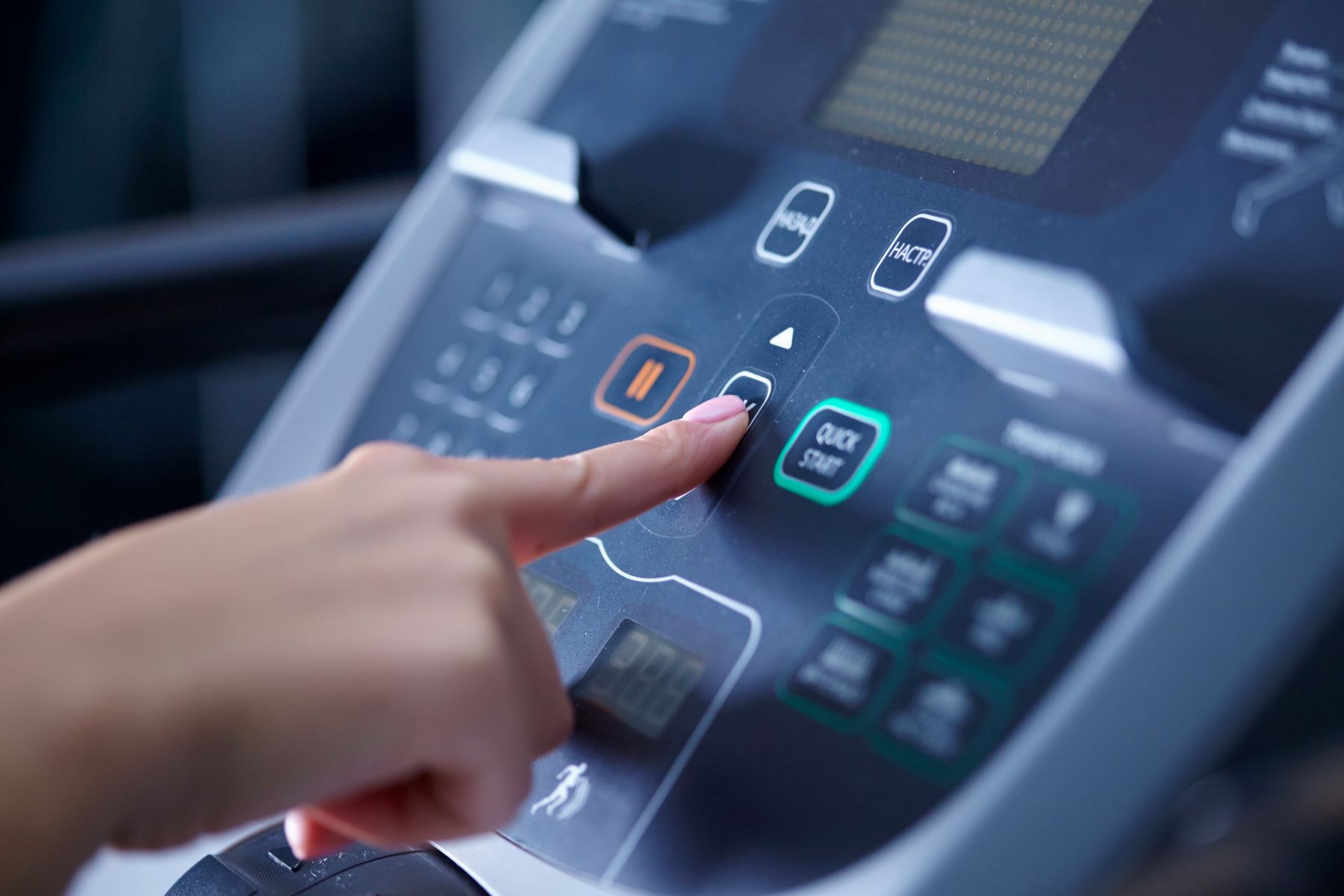Home>Misc>Featured>How To Get Your Dog To Walk On A Treadmill
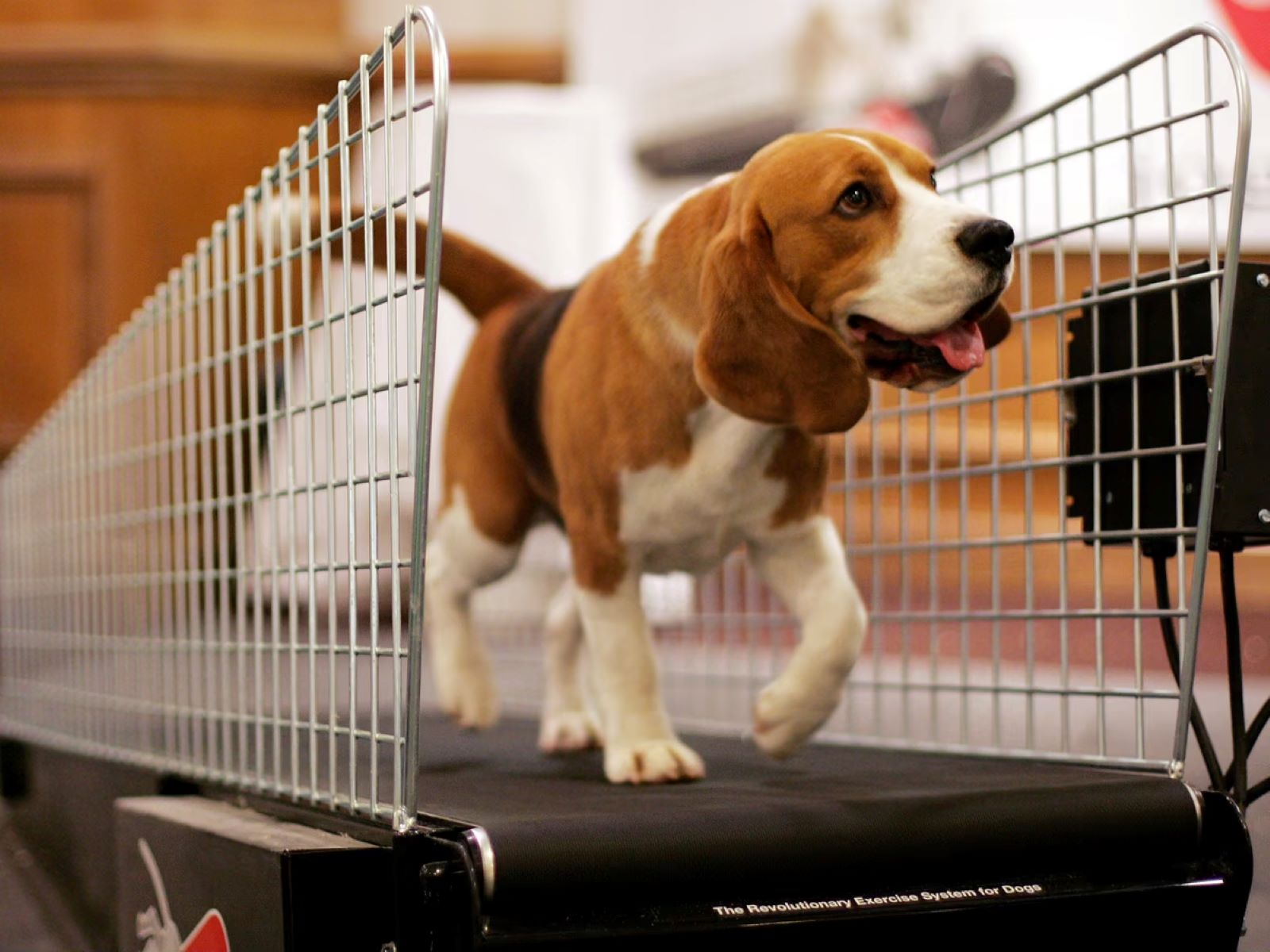

Featured
How To Get Your Dog To Walk On A Treadmill
Modified: January 2, 2024
Learn how to train your dog to walk on a treadmill with our step-by-step guide. Get expert tips and advice on featured dog training techniques.
Introduction
Welcome to the world of treadmill training for dogs! If you’ve ever struggled to keep up with your energetic canine companion’s exercise needs, or if you live in a climate that makes outdoor walks challenging, a treadmill can be a game-changer. It provides a convenient and controlled environment for your dog to get the exercise they need, regardless of the weather or your own availability.
In this article, we will explore the benefits of treadmill exercise for dogs, guide you on choosing the right treadmill, and offer tips on how to successfully introduce and train your furry friend to walk on the treadmill.
Dogs, like humans, require regular physical activity to maintain good health. However, meeting their exercise needs can be challenging at times. Whether you have a high-energy breed that requires an extra dose of exercise or a senior dog who may have mobility limitations, a treadmill can be a valuable tool to ensure your canine companion stays fit and healthy.
Furthermore, treadmill training can be especially beneficial for those living in urban areas or climates with harsh weather conditions. Instead of missing out on exercise due to rain, snow, or extreme heat, you can bring the exercise indoors and provide a safe and controlled environment for your dog.
Not only does treadmill training help with physical exercise, but it can also have positive effects on a dog’s mental well-being. Regular exercise releases endorphins, which can help reduce anxiety, stress, and destructive behavior. A tired dog is a happy dog!
However, before diving into treadmill training, it’s important to find the right equipment that suits your dog’s needs and provides a safe and enjoyable experience. In the next section, we will discuss the factors to consider when choosing a treadmill for your four-legged friend.
Benefits of Treadmill Exercise for Dogs
Treadmill exercise offers numerous benefits for dogs of all ages, sizes, and energy levels. Let’s explore some of the advantages that make it a worthwhile addition to your dog’s fitness routine.
- Consistent Exercise: One of the key benefits of treadmill training is the ability to provide consistent exercise for your dog. Whether you’re busy with work or facing inclement weather, a treadmill ensures that your furry friend can still get the physical activity they need for optimal health.
- Controlled Environment: Treadmill training allows you to control the workout conditions. You can adjust the speed, incline, and duration of the exercise session based on your dog’s fitness level and individual needs. This level of control is especially helpful for dogs with specific exercise requirements or those recovering from an injury.
- Versatility: Treadmills offer a versatile exercise option for dogs. They can be used for a leisurely walk, a brisk jog, or an intense run, depending on your dog’s abilities and energy level. This versatility allows you to tailor the workout to meet your dog’s specific needs.
- Weight Management: Regular exercise on a treadmill can be an effective tool for weight management in dogs. Just like humans, dogs can struggle with weight gain, which can have negative effects on their overall health and well-being. Treadmill exercise helps burn calories, increase metabolism, and build muscle, supporting your dog’s weight management goals.
- Mental Stimulation: In addition to physical benefits, treadmill exercise provides mental stimulation for dogs. The controlled environment and the focus required to maintain balance on the moving platform engage their mind and prevent boredom. This can help decrease behavior problems that may arise from pent-up energy and boredom.
- Joint Health: For dogs with joint issues or arthritis, treadmill exercise can be a low-impact option that reduces stress on joints while still providing cardiovascular benefits. Controlling the speed and incline allows you to customize the workout to accommodate your dog’s condition and limitations, promoting joint health and mobility.
With all these advantages, it’s clear that incorporating treadmill exercise into your dog’s routine can have a positive impact on their overall health, fitness, and quality of life. Now that you understand the benefits, let’s dive into the next section and explore how to choose the right treadmill for your furry friend.
Choosing the Right Treadmill for Your Dog
When it comes to selecting a treadmill for your dog, there are a few important factors to consider. By choosing the right treadmill, you can ensure a safe and effective workout for your furry friend. Let’s explore these factors in detail:
- Size and Weight Capacity: The first consideration is the size and weight capacity of the treadmill. Ensure that the treadmill is suitable for your dog’s size and weight. A treadmill designed for small dogs may not be suitable for larger breeds, and vice versa. Check the manufacturer’s specifications to determine the appropriate size and weight capacity for your dog.
- Running Surface: The running surface of the treadmill should be wide and long enough to comfortably accommodate your dog’s stride. A narrow or short running surface can restrict your dog’s movement and lead to discomfort or injury. Look for a treadmill with a spacious running area to ensure your dog can walk or run freely.
- Speed and Incline Settings: Consider the speed and incline settings of the treadmill. Different dogs have different fitness levels and exercise requirements. Look for a treadmill that offers a wide range of speed and incline options, so you can customize the workout based on your dog’s abilities and goals.
- Noise and Stability: Dogs are sensitive to sounds, so it’s important to choose a treadmill that operates quietly. Loud noises can startle or stress your dog, making the workout experience unpleasant. Additionally, opt for a treadmill that is stable and sturdy to prevent any wobbling or tipping while your dog is using it.
- Safety Features: Safety should be a top priority when selecting a treadmill for your dog. Look for features such as side rails or barriers to prevent your dog from accidentally stepping off the treadmill. Some treadmills also offer emergency stop buttons, which can be useful in case of any mishaps or accidents.
- Easy Maintenance: Consider the ease of maintenance and cleaning. Look for a treadmill with a smooth and durable surface that can be easily wiped down or cleaned. Treadmills with removable covers or mats make cleaning more convenient.
Take your time to research different brands and models, read customer reviews, and consult with a veterinarian or professional trainer if needed. By considering these factors, you can choose a treadmill that meets your dog’s specific needs and provides a safe and enjoyable exercise experience.
Preparing Your Dog for Treadmill Training
Before introducing your dog to the treadmill, it’s important to properly prepare them for the training process. Taking the time to gradually acclimate your dog to the treadmill will increase their comfort and confidence. Here are some steps to follow in preparing your dog for treadmill training:
- Ensure Basic Training: Before starting treadmill training, it’s essential that your dog has a solid foundation of basic obedience training. Commands such as “sit,” “stay,” “come,” and “leave it” are not only useful during training but also crucial for their safety on the treadmill. If your dog is not familiar with these commands, consider enrolling in a basic obedience class or working with a professional trainer.
- Create a Positive Association: Help your dog develop a positive association with the treadmill by gradually introducing them to it in a non-threatening way. Place the treadmill in a familiar and comfortable environment, and allow your dog to approach it at their own pace. Use treats, toys, and praise to reinforce positive behavior and make the treadmill a fun and rewarding experience.
- Introduce Sight and Sound: Turn on the treadmill and let your dog observe it from a safe distance. Allow them to become familiar with the sight and sound of the moving belt. If your dog shows signs of fear or hesitation, don’t force them to get closer. Instead, offer treats and praise for calm behavior and gradually decrease the distance between your dog and the treadmill over several sessions.
- Desensitize to the Moving Belt: Once your dog is comfortable with the sound and sight of the treadmill, desensitize them to the moving belt. Start by turning the treadmill on at the lowest speed without your dog being on it. Allow them to observe and approach it at their own pace. Gradually increase the speed while watching your dog’s reaction. If they seem anxious or uncomfortable, slow down or stop the belt and offer reassurance.
- Practice Getting on and off the Treadmill: Teach your dog to confidently step onto the treadmill by using treats or a favorite toy as motivation. Start with the treadmill turned off, and encourage your dog to climb on and off. Use a command such as “on” or “treadmill” to associate the action. Reinforce with rewards and praise for successfully getting on and off.
- Walking on a Stationary Treadmill: Once your dog is comfortable with getting on and off the treadmill, start practicing walking on a stationary belt. Begin with very short sessions, just a couple of seconds, and gradually increase the duration as your dog becomes more comfortable. Use treats and praise to encourage them to stay on the treadmill.
Remember, patience is key during this preparation process. Every dog is different, and some may take longer to adjust to the treadmill than others. By taking the time to properly prepare and acclimate your dog, you set a solid foundation for successful treadmill training.
Introducing Your Dog to the Treadmill
Once your dog is comfortable with the preparation steps, it’s time to introduce them to the treadmill itself. Properly introducing your dog to the treadmill will help them feel at ease and confident during the training process. Follow these steps to introduce your dog to the treadmill:
- Start with Short Sessions: Begin by setting the treadmill at the lowest speed. Encourage your dog to step onto the treadmill and reward them with treats and praise. Keep the initial sessions short, just a minute or two, to prevent overwhelming or fatiguing your dog.
- Use Leash and Treats: Attach your dog’s leash and hold it while they walk on the treadmill. Be sure to stand in a position that is safe and comfortable for both you and your dog. Use treats and positive reinforcement to keep them motivated and focused.
- Gradually Increase Speed: As your dog becomes more comfortable on the treadmill, gradually increase the speed to a level that matches their walking pace. Observe your dog’s movement and body language to ensure they are comfortable and not struggling to keep up with the speed.
- Monitor Body Language: Pay close attention to your dog’s body language while they are on the treadmill. Look for signs of stress or anxiety, such as excessive panting, drooling, pacing, or trying to jump off the treadmill. If you notice any signs of discomfort, immediately slow down or stop the treadmill and give your dog a break.
- Encourage Proper Form: During the training sessions, encourage your dog to maintain proper form and posture while walking on the treadmill. This includes a straight back, level head, and relaxed movement. Use treats and verbal cues to guide and encourage them.
- End on a Positive Note: Always end the training sessions on a positive note. Gradually decrease the speed of the treadmill and reward your dog with praise and treats as they step off the treadmill. This will reinforce the idea that treadmill exercise is a positive and enjoyable experience.
Remember, every dog is unique, and the time it takes for them to adjust to the treadmill can vary. Stay patient and be consistent in your training efforts. Gradually increase the duration and intensity of the treadmill sessions as your dog becomes more comfortable and confident. With time, patience, and positive reinforcement, your dog will learn to walk and exercise on the treadmill like a pro!
Teaching Your Dog to Walk on the Treadmill
Now that your dog is familiar with the treadmill and has been introduced to it, it’s time to start teaching them how to walk on it. The following steps will help you guide your dog through the process of walking on the treadmill:
- Start with Leash Guidance: Attach your dog’s leash and guide them onto the treadmill. Position yourself beside the treadmill, holding the leash, and walk alongside your dog as the treadmill moves. This will help your dog understand the movement and gain confidence.
- Use Verbal Cues: Introduce verbal cues such as “walk” or “treadmill” as you guide your dog. Repeat these cues consistently during the training sessions to help your dog associate the command with walking on the treadmill.
- Gradually Release the Leash: As your dog becomes more comfortable and confident, gradually release some tension on the leash and let your dog walk on their own while you stand beside the treadmill. However, keep a close eye on your dog’s behavior and be prepared to take control of the leash if needed.
- Encourage Steady Pace: Encourage your dog to maintain a steady pace on the treadmill. Use treats and positive reinforcement to motivate them and reward them for walking at the appropriate speed. Reinforce the verbal cues to help guide their movement.
- Monitor and Adjust: Continuously observe your dog’s body language and adjust the speed of the treadmill as necessary. If your dog seems stressed or fatigued, slow down or stop the treadmill. If they’re comfortable and energetic, you can gradually increase the speed to offer a more challenging workout.
- Practice Duration: Increase the duration of the treadmill sessions gradually. Start with short sessions, around five to ten minutes, and gradually extend the time as your dog builds endurance. Be mindful of your dog’s fitness level and any underlying health conditions that may affect their ability to exercise.
- Reinforce Positive Behavior: Throughout the training process, continue to use positive reinforcement to reward your dog for their efforts and progress. Praise and treats are powerful motivators that will help your dog understand that walking on the treadmill is a rewarding experience.
Consistency and patience are key to successfully teaching your dog to walk on the treadmill. Each dog learns at their own pace, so be prepared for some trial and error. Celebrate small victories and always end each session on a positive note. With time and practice, your dog will become comfortable and confident walking on the treadmill, making exercise a fun and enjoyable part of their routine.
Gradually Increasing Speed and Duration
As your dog becomes more comfortable and experienced with walking on the treadmill, it’s time to gradually increase the speed and duration of the workout. This progressive approach will help improve their endurance, fitness level, and overall performance. Here’s how you can gradually increase the speed and duration of the treadmill sessions:
- Incremental Speed Increase: Start by increasing the speed of the treadmill in small increments. Monitor your dog’s movement and body language to ensure they are comfortable and can maintain a steady pace. If your dog seems to struggle or shows signs of fatigue, reduce the speed and continue at a level that is more manageable for them.
- Use Intermittent Speed Changes: Incorporate intermittent speed changes during the treadmill session to provide variety and challenge for your dog. Gradually increasing the speed for short bursts, then returning to a comfortable pace, can help build endurance and improve cardiovascular fitness.
- Slow and Steady Progression: Focus on a slow and steady progression when it comes to both speed and duration. Increase the speed and duration of the treadmill workouts gradually, giving your dog enough time to adapt and adjust. Pushing too hard too quickly may lead to exhaustion or even injuries.
- Monitor Signs of Fatigue: Keep a close eye on your dog’s behavior and signs of fatigue during the treadmill sessions. Heavy panting, excessive drooling, stumbling, or reluctance to continue may indicate that your dog needs a break. Always prioritize your dog’s well-being and take breaks as needed.
- Regular Progress Assessments: Regularly assess your dog’s progress to determine whether they are ready for further increases in speed or duration. Observe their energy levels, overall performance, and any physical changes. Consulting with a veterinarian or professional trainer can also provide valuable insights and guidance.
- Listen to Your Dog: Pay attention to your dog’s cues and body language. They may communicate when they’ve had enough or are pushing their limits. It’s important to listen to them and make adjustments accordingly. Pushing them beyond their capabilities can lead to injury or create negative associations with the treadmill.
Remember, the goal is to gradually increase both the speed and duration of the treadmill sessions over time. Every dog is different, so it’s important to tailor the progression to what works best for your furry friend. By taking a measured approach and prioritizing your dog’s well-being, you can help them improve their fitness level and enjoy the benefits of longer and more challenging treadmill workouts.
Using Positive Reinforcement and Rewards
Positive reinforcement is a powerful tool for training dogs, and it plays a crucial role in treadmill training as well. By using rewards, praise, and positive reinforcement, you can motivate and encourage your dog to continue their treadmill workouts. Here’s how you can effectively use positive reinforcement during treadmill training:
- Choose the Right Rewards: Determine what rewards motivate your dog the most. This can be tasty treats, verbal praise, favorite toys, or a combination of these. Experiment with different rewards to find what your dog responds to best.
- Timing is Key: Deliver the rewards immediately after your dog exhibits the desired behavior. This helps create a clear connection between the behavior and the reward. For example, give a treat and offer enthusiastic praise when your dog successfully walks on the treadmill.
- Use Verbal Cues: Pair verbal cues with positive reinforcement. Consistently use specific words or phrases, such as “good job” or “well done,” to mark and reinforce desired behaviors. Over time, your dog will associate these cues with positive reinforcement.
- Gradually Fade Out Treats: While treats are effective motivators, the ultimate goal is for your dog to find intrinsic satisfaction in the activity itself. Once your dog is comfortable and consistent with treadmill training, gradually reduce the frequency of treat rewards, transitioning towards more verbal praise and physical affection.
- Be Consistent: Consistency is key to successful training. Use positive reinforcement consistently throughout each treadmill session. This helps your dog understand what behaviors are desired and reinforces their efforts.
- Make Training Fun: Keep the training sessions fun and engaging for your dog. Vary the rewards, introduce new challenges, and incorporate playtime before or after treadmill sessions. By making training a positive and enjoyable experience, your dog will be more motivated to participate.
- Don’t Overlook Non-Food Rewards: While treats can be effective, don’t forget about other forms of rewards. Verbal praise, pets, playtime, or taking your dog for a walk outside can also be highly rewarding for them. Use a combination of rewards to keep your dog engaged and excited about treadmill training.
Remember, positive reinforcement not only motivates your dog but also strengthens your bond with them. By utilizing rewards and positive reinforcement techniques, you create a positive association with the treadmill and make the training experience enjoyable for both you and your furry friend.
Monitoring Your Dog’s Progress
Regularly monitoring your dog’s progress during treadmill training is important to ensure their safety, track their development, and make necessary adjustments to their workout routine. Here are some key aspects to consider when monitoring your dog’s progress:
- Physical Fitness: Observe your dog’s physical fitness and stamina. Are they able to maintain a steady pace on the treadmill without excessive fatigue or struggling? Over time, you should notice improvements in their endurance and overall fitness level.
- Form and Posture: Pay attention to your dog’s form and posture while walking on the treadmill. They should maintain a straight back and level head, with relaxed movement. If you notice any abnormalities or signs of discomfort, consult with a veterinarian or professional trainer for guidance.
- Progression: Evaluate how your dog is progressing in terms of speed and duration. Gradually increase the intensity and duration of the treadmill sessions as your dog becomes more comfortable and fit. Monitor their performance and adjust the treadmill settings accordingly.
- Behavior and Attitude: Assess your dog’s behavior and attitude towards treadmill training. Are they enthusiastic and eager to participate? Do they show signs of enjoyment and engagement? A positive attitude suggests that they are enjoying the training sessions and finding them rewarding.
- Recovery Time: Monitor how long it takes for your dog to recover after a treadmill session. A dog that quickly recovers and returns to their normal energy levels indicates an appropriate workout intensity. If your dog takes a longer time to recover or shows signs of excessive fatigue, adjust the intensity or duration of the sessions.
- Weight Management: Keep track of your dog’s weight and body condition throughout the treadmill training. Regular exercise can contribute to weight management, so monitor their progress to ensure they are on track and maintaining a healthy weight.
- Consult Professionals: If you have any concerns about your dog’s progress, behavior, or overall health during treadmill training, don’t hesitate to consult with a veterinarian or professional trainer. They can provide valuable guidance, assess your dog’s progress, and make appropriate recommendations to tailor the training to your dog’s specific needs.
By closely monitoring your dog’s progress, you can ensure that they are benefiting from the treadmill training while avoiding any potential issues or injuries. Pay attention to their physical abilities, form, behavior, and consult professionals when needed. With consistent monitoring, you can make adjustments to their workout routine and create a safe and effective treadmill training plan for your furry friend.
Safety Tips for Treadmill Training
While treadmill training can be a fantastic way to exercise your dog, it’s important to prioritize their safety throughout the process. Implementing these safety tips will help ensure a secure and enjoyable treadmill training experience for both you and your furry friend:
- Supervise Always: Never leave your dog unattended during treadmill training. Supervise them closely to prevent any accidents or incidents that may occur. Stay nearby to monitor their behavior and stop the treadmill immediately if any issues arise.
- Proper Warm-Up and Cool-Down: Before starting the treadmill session, engage in a gentle warm-up routine to prepare your dog’s muscles and joints. Likewise, conclude each session with a cool-down period to allow their body to gradually return to a resting state.
- Start Slowly: Begin with slow speeds and short durations, especially if your dog is new to treadmill training. Allow them to gradually acclimate and build confidence before increasing the intensity or duration of the workout.
- Avoid Overexertion: Pay attention to your dog’s energy levels and signs of fatigue or overheating. If they show signs of exhaustion, such as excessive panting, drooling, or difficulty walking, stop the session immediately and allow them to rest.
- Provide Proper Hydration: Make sure your dog has access to fresh water before and after treadmill training. Hydration is essential to keep them cool and prevent overheating during exercise.
- Use Positive Reinforcement: Maintain a positive and supportive atmosphere during treadmill training. Use positive reinforcement techniques, rewards, and verbal cues to encourage your dog and keep their motivation high.
- Avoid Distractions: Minimize distractions in the training area to maintain your dog’s focus on the treadmill. Keep the environment calm and free from excessive noise or visual stimuli that may distract or startle them.
- Ensure Proper Fit and Mechanics: Double-check the treadmill’s fit and mechanics. Ensure the running surface is appropriate for your dog’s size and weight, and regularly inspect the treadmill for any loose parts or malfunctions.
- Gradual Speed Changes: When adjusting the speed of the treadmill, do so gradually to allow your dog to adapt and maintain their balance. Sudden speed changes may startle or disorient them, increasing the risk of injury.
- Adjust for Individual Needs: Every dog is unique, so adapt the training plan to suit your dog’s specific needs and abilities. Account for their age, fitness level, health conditions, and any physical limitations they may have.
Remember, safety should always be the top priority during treadmill training. By implementing these safety tips and maintaining a vigilant eye, you can ensure a secure and successful training experience for your beloved canine companion.
Conclusion
Congratulations! You have now learned about the benefits of treadmill exercise for dogs, how to choose the right treadmill, and the steps to prepare and train your dog to walk on the treadmill. By incorporating treadmill training into your dog’s exercise routine, you can provide them with consistent exercise, regardless of the weather or your availability.
Treadmill training offers numerous advantages, including controlled environment, versatility, weight management, mental stimulation, and joint health benefits. It is essential to select a treadmill that suits your dog’s size, weight capacity, and provides a stable running surface. Introducing your dog to the treadmill gradually and using positive reinforcement techniques will help them feel comfortable and confident during the training process.
Remember to monitor your dog’s progress, gradually increase speed and duration, and prioritize their safety at all times. Regularly assess their fitness level, form, behavior, and consult with professionals when needed to ensure a successful and safe training experience.
Treadmill training can be a fun and rewarding activity for both you and your dog. It provides a convenient and controlled way to keep your four-legged friend fit, mentally stimulated, and happy. So, lace up those walking shoes, start the treadmill, and embark on a wonderful journey of fitness and bonding with your furry companion.

